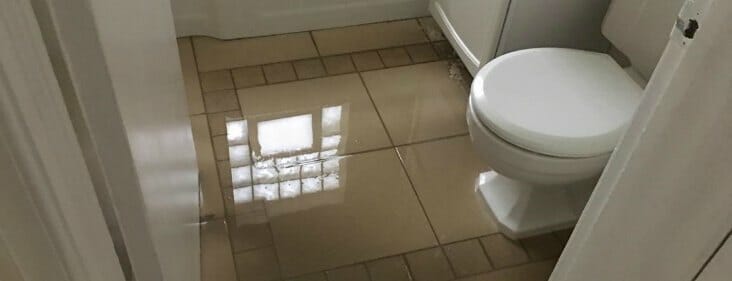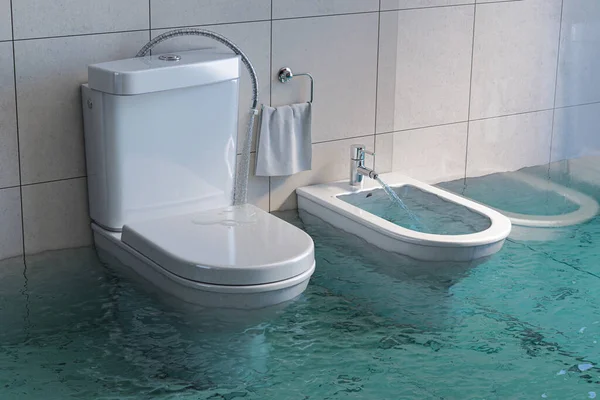How to Detect a Leaking Bathroom
How to Detect a Leaking Bathroom
Blog Article
Just about everyone seems to have their personal perception about How to Repair and Prevent Bathroom Water Damage?.

Water damage frequently occurs in the washroom because of the water used everyday. Occasionally, the damage could be a little mold from the shower. Other times, it's large damages on your floor. Whatever it is, it is always great to recognize the reason and prevent it before it occurs.
This overview will certainly go through several of the usual causes of water damage in the restroom. We will certainly also examine what you can do to avoid these reasons from damaging your restroom. Let's dive in.
These are the typical factors you would certainly have water damage in your washrooms and also just how you can spot them:
Excess Moisture
It's awesome to have that long shower as well as sprinkle water while you hem and haw and also imitate you're executing, yet occasionally these acts could cause water damage to your bathroom.
Splashing water around can cause water to go to corners and form mold and mildews. See just how you spread out excess dampness around, and also when you do it, clean it up to stop damages.
Fractures in your wall surface floor tiles
Shower room wall surface ceramic tiles have been specially designed for that objective. They safeguard the wall from dampness from individuals taking showers. Nevertheless, they are not unbreakable.
In some cases, your washroom wall ceramic tiles crack and allow some dampness to permeate right into the wall. This could potentially damage the wall surface if you do not take any type of action. If you notice a split on your wall surface ceramic tiles, repair it quickly. Do not wait up until it destroys your wall.
Overruning bathrooms as well as sinks
As humans, sometimes we make blunders that could create some water damage in the shower room. For instance, leaving your sink tap on can trigger overflowing as well as damage to various other parts of the shower room with wetness.
Also, a damaged commode could trigger overflowing. As an example, a damaged toilet manage or other parts of the tank. When this occurs, it could harm the floor.
As quickly as you discover an overruning sink or bathroom, call a plumbing technician to help manage it right away.
Ruptured or Leaking Pipelines
There are numerous pipes carrying water to various parts of your bathroom. Some pipelines take water to the bathroom, the sink, the faucets, the shower, as well as lots of other places. They crisscross the little area of the washroom.
From time to time, these pipelines could obtain rustic and also burst. Various other times, human action can cause them to leakage. When this happens, you'll locate water in the corners of your shower room or on the wall.
To identify this, look out for gurgling walls, mold and mildews, or mold. Call an expert emergency situation plumbing to repair this when it happens.
Roof Leakages
Sometimes, the issue of water damage to the washroom might not originate from the bathroom. For instance, a roof leakage could cause damages to the washroom ceiling. You can find the damages done by looking at the water spots on the ceiling.
If you locate water stains on your ceiling, inspect the roof covering to see if it's damaged. Then, call an expert to aid resolve the problem.
Verdict
Water damage to your bathroom can be bothersome. Nonetheless, you can handle it if you avoid several of the reasons mentioned in this overview. Call a professional emergency plumbing technician if you see any serious damages.
How to Prevent Water Damage in Your Bathroom?
Water damage repair is an expensive, meticulous, and lengthy process. Unfortunately, bathrooms are the most susceptible rooms to water damage due to toilets, showers, and sinks. Pipes and fixtures wear out over time and are not immune to damage. But all is not lost, as there are ways to prevent water damage from occurring in your bathroom.
Check Your Plumbing
Nothing lasts forever, especially pipes, which can rust and begin leaking over time. You should periodically conduct pipe inspections and pay attention for any musty smells or water stains that may indicate you need water damage repair. Here are some things to check:
Frequently test valves for your toilet, shower, and sink to ensure they are properly working. Check faucet supply lines hidden under vanities and replace when needed. Replace cracked or deteriorating caulking along sinks, tubs, and showers. If you notice a clog in your sink, call in a professional. Since you can’t check the pipes in the wall, keep an eye out for stains, drywall bubbling, musty smells, and excess moisture; if the bathroom is on a second level, check the ceiling of the room directly below for these signs. Don’t Overwork Your Toilet
One of the most common reasons bathrooms need water damage repair is due to overflowing toilets. Save yourself the hassle of cleanup by being mindful and not pushing your toilet to extreme limits. If you have young children, it is especially important to keep an eye on them when they are in the bathroom and to teach them how to avoid clogging the toilet. Here are some more tips to help prevent your toilet from overflowing:
If you have a septic tank, only use septic-safe toilet paper Do not flush anything down the toilet besides toilet paper; items like diapers and sanitary napkins will clog the piping Pay attention to your toilet’s water level: If it’s low, it could mean it is partially clogged or that there is a crack in the toilet bowl https://www.alure.com/home-improvements-blog/resources/how-to-prevent-water-damage-in-your-bathroom

I was guided to that write-up about How to Repair and Prevent Bathroom Water Damage? through a friend on our other web property. Are you aware of another person who is very much interested in How to Repair and Prevent Bathroom Water Damage?? Why not share it. We treasure reading our article about How to Repair and Prevent Bathroom Water Damage?.
Book Inspection Report this page